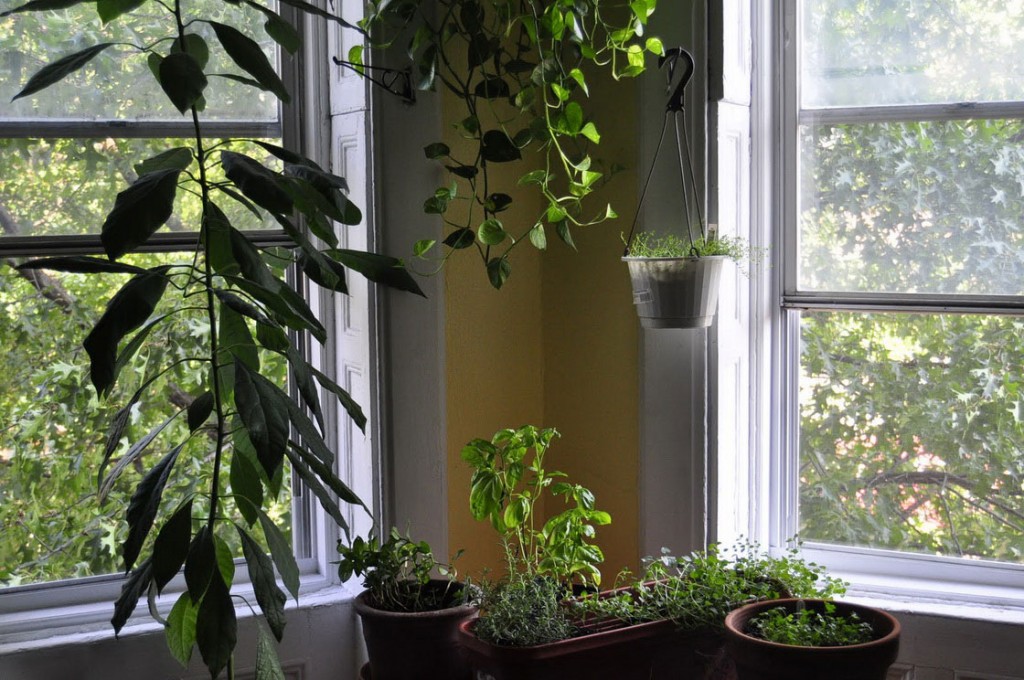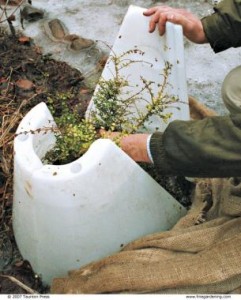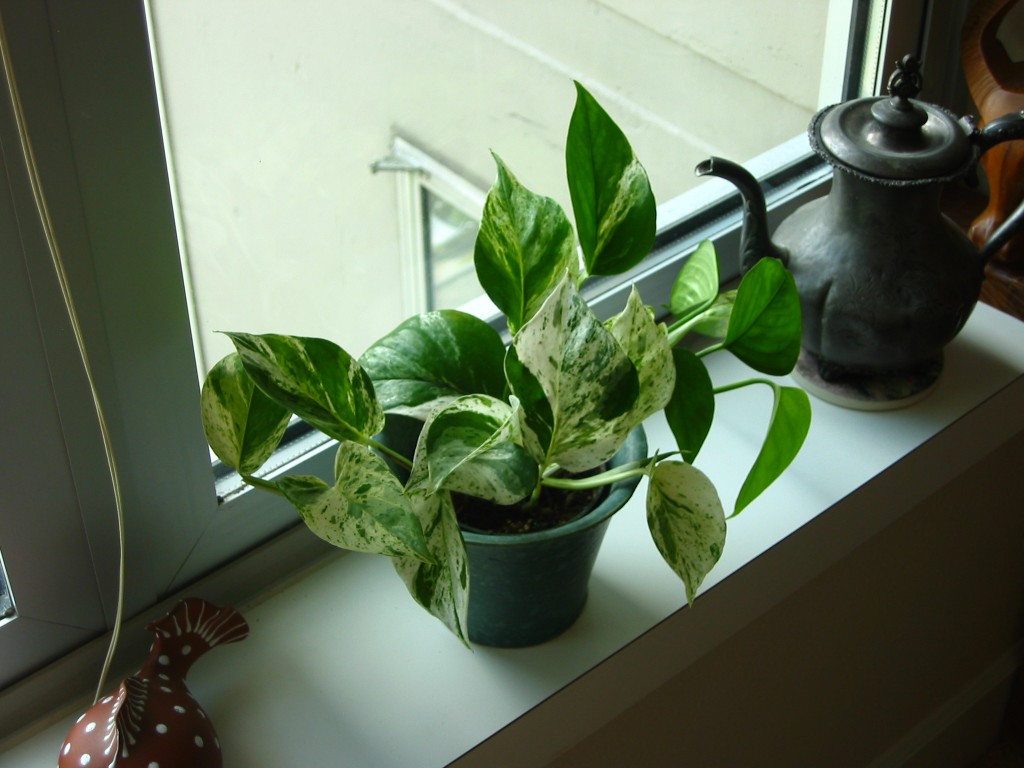Its that time of year when the frost has descended and we need to take steps to protect our plants. Cold weather, particularly frost, causes the water in plant cells to freeze, damaging the cell wall. Frost-damaged plants are easy to spot, their growth becomes limp, blackened and distorted. Evergreen plants often turn brown and the leaves of tender plants take on a translucent appearance. Frost problems are often made worse where plants face the morning sun, as this causes them to defrost quickly, rupturing their cell walls.
 Prevention is far better than cure, so try to minimise the damaging effects of cold on your plants. The first and easiest solution to the cold, is to simply remove your plants from the low temperatures. If you have any potted plants or hanging baskets outdoors, bring them inside your home. Even a move to the garage or a sun room will be beneficial, as this will still increase the temperature by at least 10 °F (−12 °C). If you’re able to, the best solution is to place your plants around the interior of your home as decoration. They’ll get the heat they need without cluttering your extra space.
Prevention is far better than cure, so try to minimise the damaging effects of cold on your plants. The first and easiest solution to the cold, is to simply remove your plants from the low temperatures. If you have any potted plants or hanging baskets outdoors, bring them inside your home. Even a move to the garage or a sun room will be beneficial, as this will still increase the temperature by at least 10 °F (−12 °C). If you’re able to, the best solution is to place your plants around the interior of your home as decoration. They’ll get the heat they need without cluttering your extra space.
Make sure tender specimens are planted in a sheltered spot, under large trees and shrubs or against walls, give them some heat and protection during the winter. You can also apply some mulch. Mulch acts as an insulator, holding in heat and moisture in the soil. It is used to protect the root systems of your plants from cold temperatures. Sometimes the cold temperature is not what damages the plant, but rather the freeze/thaw cycle affecting the soil and causing it to “heave” the plant. Similarly, the cold soil can prevent water from easily being drawn up from the plant. Regardless of the reason, applying a layer 2–3 inches thick of mulch will help prevent these problems.
 Another great tip is to heavily water the soil around your plants prior to a very cold night or freeze. The soil will trap the heat better wet than when it is dry, and evaporate slowly which warms the air around the plants. Don’t do this if you expect a hard freeze though, since it could backfire, but to protect against a little frost, a generous watering can help to retain some of the day’s heat into the night.
Another great tip is to heavily water the soil around your plants prior to a very cold night or freeze. The soil will trap the heat better wet than when it is dry, and evaporate slowly which warms the air around the plants. Don’t do this if you expect a hard freeze though, since it could backfire, but to protect against a little frost, a generous watering can help to retain some of the day’s heat into the night.
If you’re undergoing a bout of extremely cold weather that your plants won’t be able to survive, you can help them out by giving them a heat source. Either cover them with a plastic tarp or a blanket or build a makeshift greenhouse and then place the heat source inside.
you can help them out by giving them a heat source. Either cover them with a plastic tarp or a blanket or build a makeshift greenhouse and then place the heat source inside.
Other possible heat sources include christmas lights or a 100 watt light bulb; these aren’t so hot as to damage the plants, but are warm enough to increase their temperature. Don’t place the heat source in direct contact with your plants; move it away slightly so that it increases the temperature without burning the plants.
Finally, choose plants that are suited to your climate. This is the simplest, lowest-effort choice. Some plants may die back, lose their leaves, or otherwise go dormant in winter, but if you take the time to know the plants that are well adapted to your climate, you’ll be able to handle them more efficiently.


